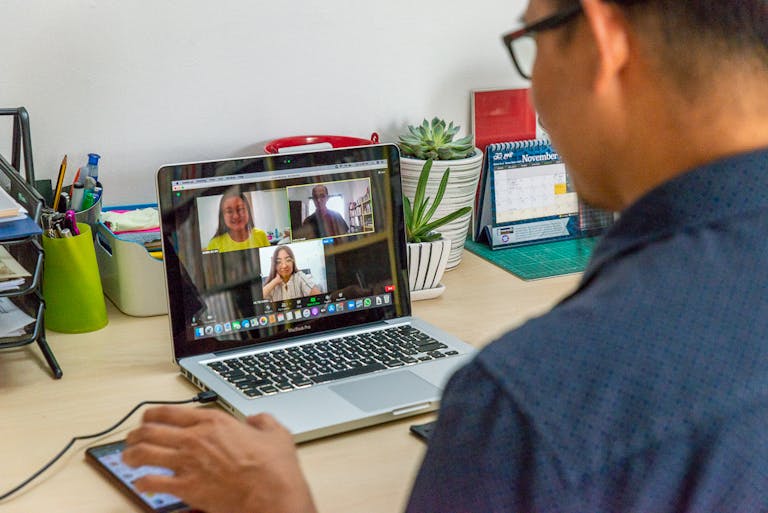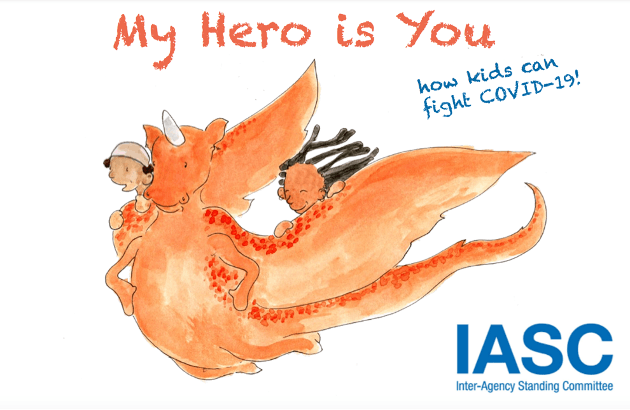While COVID-19 has had a distressing impact on mental health around the globe, World Health Organization professionals working in this area are heartened by the new, increased attention being given to emotional and mental well-being during the pandemic.
For more than a year, people around the world have been experiencing a series of accumulating, compounding traumas and stresses, including worrying about getting sick or their family members getting infected with the virus; concerns about their jobs and unstable livelihoods; juggling child care, parental care, housework, and careers; and an overall sense of dread and uncertainty about the future. COVID-19 preventive measures including physical distancing, quarantine, and working from home or taking online classes have further enhanced isolation and disconnected individuals from their friends, families, and support networks. Experts urge that this shared, universal experience of mental distress must convince communities and policymakers of the central importance of mental health to health care.
“What is unique about this pandemic experience from a mental health point of view is that we have a single point in history that we can all refer to when we all felt, it is safe to say, some form of distress or anxiety from the situation,” said Dr. Jason Ligot, a World Health Organization (WHO) consultant for mental health promotion and communication.
Mainstreaming mental health and psychosocial support
Before the pandemic, countries around the world were investing less than 2% of their health budgets on mental health—with annual spending on mental health at less than $2 per person and less than $0.25 per person in low-income countries. And according to WHO, by October 2020, the pandemic had disrupted or, in some cases, halted critical mental health services in 93% of countries around the world. In the United States alone, 19% of adults are experiencing a mental illness and 4.55% of adults are experiencing a severe mental illness. The percentage of people with severe mental disorders who do not receive treatment is significant in high-income countries—between 35% and 50%—but that number balloons to between 76% and 85% in low- and middle-income countries.
Many of the available mental health services in the region were concentrated in major cities or served individuals with severe mental health conditions. With the increasing prevalence of mental health symptoms during the pandemic, there was an opportunity to offer lower intensity mental health and psychosocial support services that nonspecialist health workers and community members —nurses, teachers, caregivers — could be trained to provide. This includes counseling and telemedicine services using digital technology. WHO also called on national governments to integrate mental health into their COVID-19 response plans and is working with them to make sure that tactics are relevant to local contexts.

Dr. Ligot and his colleagues were called upon early in the pandemic to help develop guidance for how to address some of the feelings and distress that people were experiencing and to build capacity of mental health systems in the Western Pacific Region. These resources targeted the general public as well as particularly vulnerable groups such as COVID-19 responders — nurses and law enforcement officers, and others on the front lines such as food service workers — as well as older adults in care facilities, people with preexisting mental health conditions, and children and youths. WHO is part of the Inter-Agency Standing Committee Reference Group on Mental Health and Psychosocial Support that has put together visual training modules to help front-line workers take care of others while also prioritizing their own self-care.

Children and young people have been particularly affected by the pandemic. Even though many children cannot fully comprehend the gravity of the virus, they are still sensing shifts in their routines — from not being able to attend school in person to seeing their parents now working from home — and can feel the same anxiety and fears as adults. To explain to young audiences what the virus is and how to prevent infection, a group of UN agencies developed a story book, My Hero is You: How kids can fight COVID-19!, for children ages 6 to 11. The book has been translated into several languages, dialects, and Braille and has even been adapted into a short animated film.

WHO’s mental health team has also taken advantage of social media to engage with audiences about their well-being. They use online platforms to communicate with communities— particularly young people— to help them understand that it’s normal to feel stressed at this time and to build their mental health literacy so that they can better understand their emotions and how to deal with them. Sometimes, this is as simple as verbalizing the feelings and sharing them with a trusted individual.
“We also wanted to highlight resilience,” said Dr. Ligot. “Another way of looking at the increasing numbers of people who are showing signs of mental distress is that they are reflecting enormous levels of resilience in these extraordinary times.”
Normalizing mental health
Team members in WHO’s Western Pacific Regional office describe how the pandemic helped people become more open and communicative about their mental health. Previously, conversations around mental health had often been reduced to imagery of violent patients in psychiatric hospitals without understanding the full spectrum of conditions that these complex cases can entail. The fact that everyone was feeling down at some point or another helped destigmatize the conversation around mental health and break down stereotypes.
“During the time I’ve spent in Asia, when people experience distress or symptoms of common mental disorders, it’s sometimes difficult for them to directly talk about what they’re feeling,” said Martin Vandendyck, a WHO technical lead for mental health and substance use. “They will say they have pain or a headache or a stomachache, but for the first time ever, since the beginning of last year — starting with colleagues in our office — people were saying it out loud: I’m so stressed.”
Mental health professionals hope that the renewed focus on mental well-being as part of overall health during COVID-19 will continue beyond the pandemic. One critical area they are focusing on is the issue of equity in providing mental health services and enhancing protective factors while reducing risk factors for mental distress and ill health across the life course.
“People not only need intervention to relieve their distress,” said Mr. Vandendyck. “We also have to take into consideration their socioeconomic condition, which can be a risk factor for developing a mental health condition.”
“Reaching the unreached” is a core element of the mental health team’s work, with an increasing focus on how and why vulnerable, underserved groups experience mental health differently. The pandemic has helped aggregate data and highlight some longstanding gaps.
“It is now crystal clear that mental health needs must be treated as a core element of our response to and recovery from the COVID-19 pandemic,” said WHO Director-General Dr. Tedros Adhanom Ghebreyesus. “A failure to take people’s emotional well-being seriously will lead to long-term social and economic costs to society.”
Featured Photo: Kate Tracy Ong/ © WHO



 View All Blog Posts
View All Blog Posts

